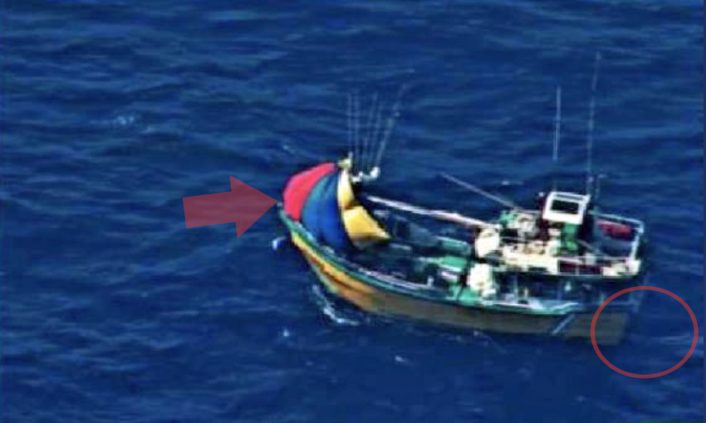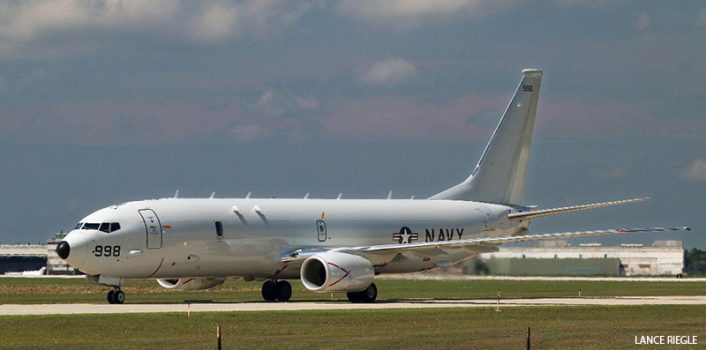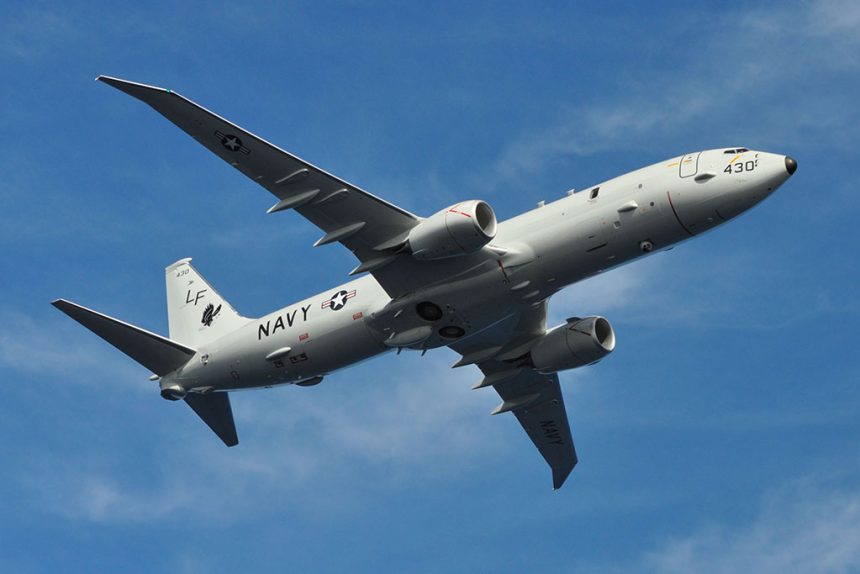U.S. Navy P-8A Poseidon Locates Missing Fishing Vessel in Search Off Sri Lanka. Dramatic Rescue Adds to List of Recent Humanitarian Successes by U.S. Aircraft.
A U.S. Navy Boeing P-8A Poseidon has located a missing civilian fishing boat and its six-man crew in the vast open ocean south of the island of Sri Lanka in the Luccadive Sea north of the Indian Ocean. The long-range multi-mission maritime patrol and anti-submarine aircraft was from Patrol Squadron 45 (VP-45) the “Pelicans” originally from Naval Air Station Jacksonville, Florida and flying out of Naval Support Facility Diego Garcia.
The U.S. Navy P-8A joined the search at the request of the Sri Lankan Navy after the fishing vessel went missing on Sunday, July 8, 2018.
Photos released by the U.S. Navy taken from the P-8A Poseidon show the fishing vessel after it was located with no engine wake and what may be a series of improvised sails rigged on its bow, suggesting the vessel may have lost steerage and power possibly resulting in it drifting south into the open ocean.

The region is known as dangerous for sailors and aircraft due to severe weather, the threat of piracy and other hazards to navigation in the remote maritime environment. Part of the unsuccessful search for the missing Malaysia Airlines Flight 370 that disappeared without a trace in March, 2014 was in this region.
A Sri Lankan Navy vessel is underway to the location of the lost fishing boat as directed by the U.S. Navy P-8A that located it hours after joining the three-day search.

This successful search is the second victory for U.S. long range search and rescue efforts requested by a foreign nation following a similar incident on June 25, 2018 when a U.S. Air Force B-52H crew flying out of Andersen AFB, Guam and originally from Barksdale, Louisiana located a missing indigenous Polynesian canoe that was lost for six days near Guam in the Pacific. The crew of that B-52H were also able to direct rescue efforts to the location of the lost ocean canoe.
In an official U.S. Navy statement about the rescue operation, Navy Commander Mark E. Zematis, commanding officer of the 45th Patrol Squadron, said, “As we continue to explore the operational reach and agility of the P-8A Poseidon, the trust and relationships we build with our multi-national partners becomes more and more apparent in such a complex and broad Indo-Pacific region. The positive relationship between Sri Lanka and the United States is what allowed our aircrew and maintenance team to effectively launch and assist with the recovery of their countryman.”

The Boeing P-8A Poseidon is a new long-range patrol, surveillance and anti-submarine warfare aircraft that is based on the highly successful civilian Boeing 737-800ERX long range, twin-engine jet airliner. It first flew in April, 2009. The P-8A is the U.S. Navy’s replacement for the aging Lockheed P-3 Orion turboprop aircraft that performed the same mission. It is also in service with the Australian Air Force and the Indian Navy where it is known as the P-8I Neptune. England, Norway and New Zealand have also ordered versions of the highly successful P-8 Poseidon.

An interesting feature of the P-8A is its planned integration with the Northrop Grumman MQ-4C Triton ultra-long range remotely piloted unmanned aerial vehicle. This capability will enable the P-8 and MQ-4C to combine their surveillance areas significantly.









